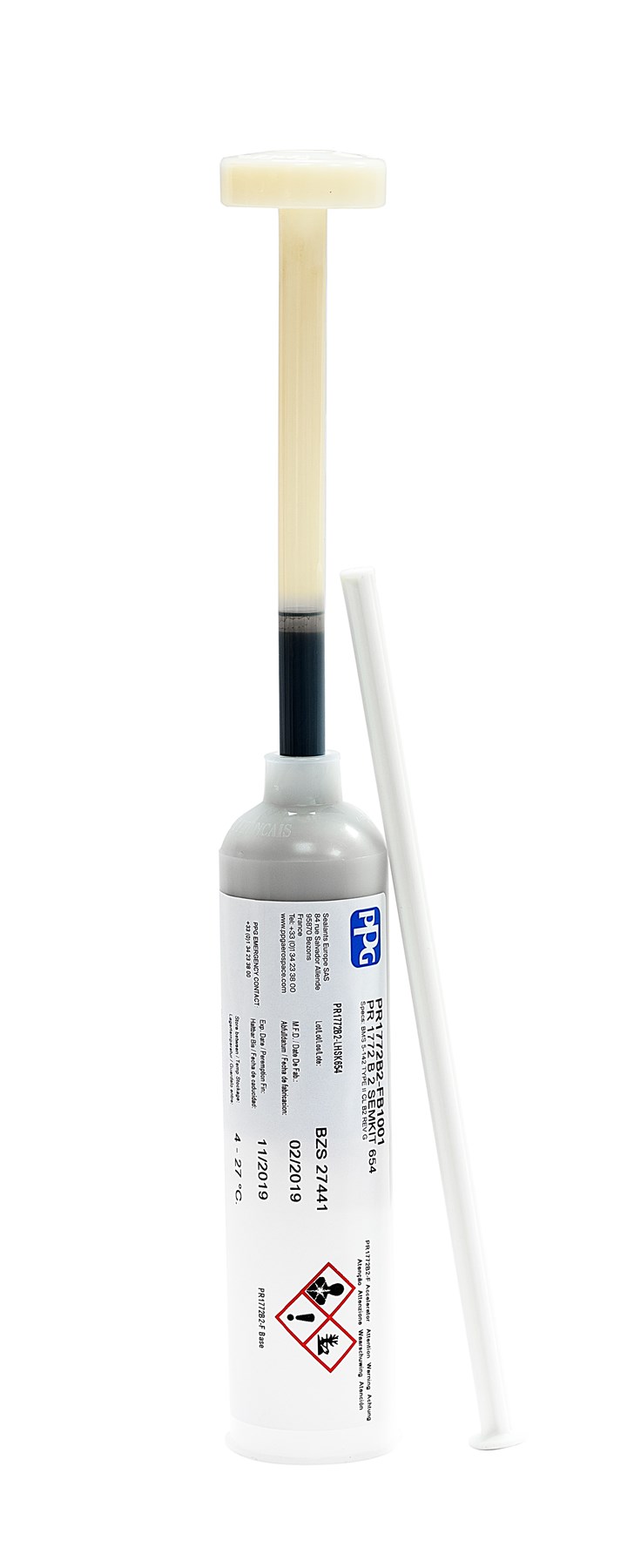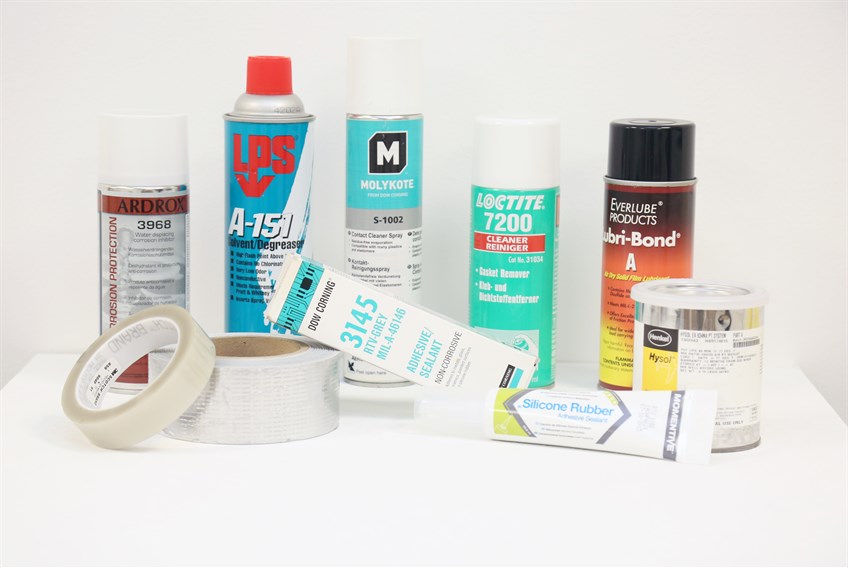What are aircraft sealants?

One of the most crucial elements of the aviation industry is aircraft sealants. If aircraft sealants didn’t exist, then the industry will be very different. The key benefits of these adhesives include providing safety for the passengers, pilots and enhancing the aircraft lifespan. Moreover, another crucial advantage is that sealants significantly reduce the cost of maintenance and repairs.
The sealants used for application of the aircraft are of unique class, they are designed to reinforce th airplane parts & eventually add structural integrity.
When producing aircraft application adhesives, the National Civil Aviation Authority regulations must be considered. These considerations include the safety and quality standards set by the NAA. The primary and unique features of airplane sealants include the ability to withstand low and high temperatures.
Moreover, the other important feature of aircraft sealants includes their ability to withstand combustible materials reactive nature, vibrations, velocity of the aircraft & volatility. Furthermore, the sealants are used for several aircraft applications, however they serve similar purposes. Some of these purposes are depicted below.
➢ Corrosion in different areas
➢ Intrusion of fluid Fire being spread in different areas
➢ Fire being spread in different compartments Oxidation
➢ Oxidation
➢ Intrusion of dust
Types of aircraft sealants
There are many types of aircraft sealants, each type has its own properties, and they are selected based on the area of aircraft application. Below are different class of aircraft sealants.
Class of aircraft sealants
- Class A: This type of sealant is thin in density and application is by brush, normally used on aircraft fasteners. An example is the PPG PR1428A-2 Fuel Tank Access Door Sealant
- Class B: class of sealant is thicker in density and mainly applied in injection seals and fillet. An example is the PPG PS 870 B1 2 Class B Corrosion Inhibitive Sealant.
- Class C: This class of sealant is thinner than the B Class and they are mainly applied for fay sealings. An example is the PPG PS870C12 Class C Sealant.




There are many ways to apply aircraft sealants, this is illustrated below.
- Brushable sealants: This type of sealant is applied to various small parts such as fasteners of the aircraft using a brush. An example is the PPG PR1782A Low Weight Fuel Tank Sealant.
- Sealants for Extrusion Gun: This type of sealant is applied to the aircraft using a mechanism which has a nozzle and extruded using pressure. An example is the PPG PR1770B-1/2 High Strength Fueltank Sealant.
- Thread Sealant: This type is used for filling gaps in between the threaded aircraft parts. The benefit of this sealant is that it increases the strength of the hoses or valves.
- Latex sealant: This type is soluble in water and is mostly used in interior parts of the aircraft.This type of sealant is also known for its ease of clean-up and moldability.
Furthermore, aviation adhesive manufacturers such as 3M have produced specific sealants for each part of the aircraft based on the requirement of each area. This information is illustrated below.
Fuel Tank & Fuselage Application Sealants:
This sealant is a universal sealant that can be applied in all areas of the fuel tank and the fuselage. This is a Class B type sealant which aids in reducing the shrinkage and rework cost in the area where this sealant is applied in. The most widely used fuel tank sealant is AC-350 A, B 3 produced by 3M. This sealant is Class A and provides fast cure. The key considerations when producing this sealant includes outstanding resistance to jet fuel, combustion and gasoline elements. Moreover, this sealant maintains the strength on most metal elements including steel, aluminum, titanium etc.




Sealant for Windshield
This type of sealant is produced for aircraft glass, acrylic, windshields and canopies. Moreover, this is a class B sealant which has excellent resistance to UV rays, exposure of turbulent weather and cures instantly. An example of this is the PR-1425 Class B Windshield and Canopy Sealant.
Firewall sealant
The firewall sealant is vital for the safety between engine and passenger compartment. The primary purpose of this sealant is ensuring flames from the engine compartment don’t reach the passenger compartment. An example of this is the Solvay Dapco 18 4F Firewall Sealant.
Properties and Characteristics of effective sealants:
The primary characteristics to look for in effective sealants include sustainability, versatility, compliance with industry standards and feasibility of use. These characteristics are explained below.
Versatility
There are countless components installed in an aircraft hence, there is constant need for technical reinforcements. Some sealants provide fast cure time; however, they might not be as effective when compared to long curing sealants. In the aircraft several components like the wing will need a sealant which is very effective even if takes long curing time. On the contrary, some other minor components which are not directly linked to airworthiness of the aircraft can easily be applied with fast curing sealants.
Sustainability
The primary aircraft sealants value is the durability it provides when applied to several aircraft components. In order to mitigate vibration and reduce overall cost of systems, sealants are applied, and they play a major factor. If the sealant is chemically strong and flexible the maintenance requirements of the aircraft are met.
Feasability of Use
This characteristic and feature of aircraft sealant includes its ability to have a long shelf life, smooth finish and that it requires little or no machining after application.
Compliance with Industry Standards
All aircraft sealants must meet standards set by NAA’s such as FAA, EASA etc. One of the most crucial criteria which must be met is the flammability regulations. There are certain chemicals which the sealant must comprise of in order to meet industry standards.
Flying experience quality
In the aviation industry keeping passenger comfort and reducing operating cost is very critical. The inner acoustics of an aircraft can directly impact the comfort, safety of the passengers and pilot. Hence, the sealant used for application must provide sustainability and feasibility of use.
Common causes and failures of aircraft sealants
There are several causes and reasons for aircraft sealant failures, they are mentioned in detail below.
Application of aging sealants
Every sealant produced has a shelf life, this is basically the maximum duration the sealant can last from its production date. Once the sealant reaches its shelf life, it becomes brittle, dry and shows signs of cracking.
Selecting inappropriate type of sealant for application
Every section of the aircraft has specific requirements and based on that a sealant must be selected with the appropriate characteristics. Thus, if the incorrect sealant is chosen for an application, it can be a cause for failure.
Lack of surface preparation
The surface preparation prior to applying sealant on any component of the aircraft is very important. The primary elements which have to be removed before applying sealant includes removal of debris, dirt, dust and any other type of contaminants.
Tips for choosing correct aircraft sealant
Prior to choosing the right sealant for aircraft application, there are various factors to be considered.
These factors are mentioned below.
· Time it takes for the sealant to cure.
· Range of temperatures the sealant can withstand
· Style of sealant application (For instance brushables, latex style etc.)
· Type of fuel
· Requirements of weight
· Density of the tank
· The shelf life of the sealant
· The tank material for the best adhesion
Advice of Maintenance and Inspection of aircraft sealants
Aircraft sealants are a key factor in the overall aviation industry. They provide safety, efficiency and comfort level to the passenger and crew on board in an aircraft. There are several types of sealants produced for the application in aircraft. The primary difference in these sealants is their chemical compositions and overall density. These factors influence the sealants versatility of use, sustainability and overall feasibility for application in several areas of the aircraft.
For instance, sealants with long cure time are ideal for use in airworthiness related areas such as the wing box area. The best advice for maintenance and inspection of aircraft sealant is to purchase the most appropriate sealant from well known industry recognized OEMs and also ensure that industry standards set the regulatory authorities such as FAA and EASA are complied by the manufacturing companies.
One of the best companies includes 3M. Thus, appropriate sealants with chemical properties must be chosen for specific areas of the aircraft to ensure that they provide the best performance.





Comments
There are currently no comments, be the first to comment.